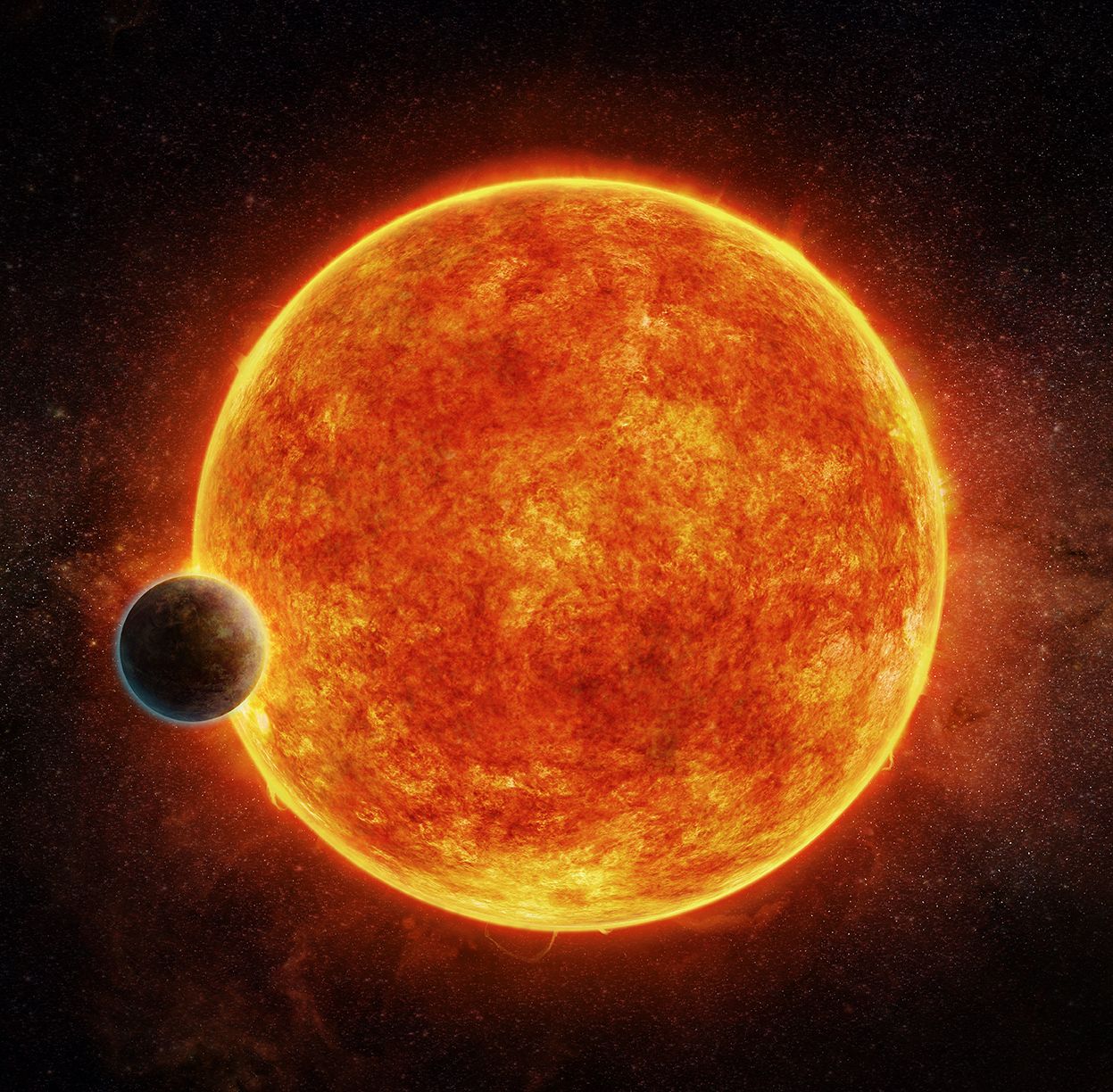
Updated | A newly discovered planet sitting in a solar system just 39 light years away has been dubbed one of the best targets for finding alien life.
The exoplanet, LHS 1140b, is believed to be a rocky "super-Earth" and astronomers say it sits right in the middle of its solar system's habitable zone—the orbital region where it is neither too hot nor too cold for liquid water to exist.
To date, more than 3,500 exoplanets have been discovered in over 2,600 planetary systems. Scientists estimate there are around 100 billion exoplanets in the Milky Way alone. But what makes a planet "potentially habitable"?
Scientists largely base their assumptions on what is required for life to exist on what we understand about Earth—and this is what they look for when canvassing the sky for exoplanets. The planet should be rocky—life as we know it cannot exist on a gas giant, for example—it needs an atmosphere capable of supporting life and it should be in the habitable zone of the solar system.
Earlier this year, NASA announced the discovery of seven potentially habitable planets in the Trappist-1 system. All were close to or within the habitable zone and were Earth-sized, but their masses and densities are not known, meaning we cannot be sure if they completely fit the criteria for life to emerge.
'Exciting' exoplanet LHS 1140b
In their latest study published in Nature, scientists led by Jason Dittmann from the Harvard-Smithsonian Center for Astrophysics, Cambridge, have announced the discovery of LHS 1140b, which appears to tick all the boxes.
The exoplanet orbits a faint red dwarf in the constellation of Cetus. Red dwarfs are stars that have masses less than 60 percent that of the Sun. As a result, the habitable zone is far closer to the star than what we see in our own solar system.
The newly discovered planet is located around 10 times closer to its star than Earth. Scientists observed the planet's transit in front of its star by observing dips in the light. They then made follow-up observations to work out LHS 1140b's orbital period, mass and density.
Their findings showed it has a diameter 1.4 times the size of Earth and a mass around seven times greater. This means the planet is far denser, indicating it is a rocky planet with an iron core. Furthermore, the team showed the planet sits right at the center of the habitable zone. They estimate LHS 1140b is at least five billion years old and formed within its current orbit, in the same way Earth did.
Dittmann says in a statement: "This is the most exciting exoplanet I've seen in the past decade. We could hardly hope for a better target to perform one of the biggest quests in science—searching for evidence of life beyond Earth."
It is not all good news though. Red dwarfs are known to emit radiation that can damage any planets orbiting them. Because of LHS 1140b's size, the team say it may well have retained its water. However, they also cannot rule out the possibility that water was stripped from the planet, leaving it with a Venus-like atmosphere.
Researchers say follow-up observations using NASA's Hubble Space Telescope will be able to show how much radiation from the red dwarf star hits LHS 1140b. Understanding this will place further constraints on its potential habitability—too much and life cannot exist. They also say the planet is an excellent candidate for observation with the James Webb Telescope, due to launch next year. NASA's new telescope will be able to study the atmospheres of exoplanets, potentially even biosignatures, which would indicate the presence of life.
Not entirely convincing?
While LHS 1140b holds promise as a potentially habitable planet, not all scientists are convinced it will lead to the discovery of alien life. David Rothery, Professor of Planetary Geosciences at the Open University tells Newsweek the discovery seems "a little inconsequential." "We have one planet, they haven't detected its atmosphere yet although we should be able to, which is interesting, because we would like to know. It clearly transits its star, so we should get a handle on the atmosphere," he says.
"Considering so many M-dwarfs have planets, they're the likeliest place to look for life now. In that respect this is another good one to have in the library of things we want to study more fully. It's close enough that we should be able to study its atmosphere moderately well with foreseeable technology. But at the moment we know next to nothing about it."
Andrew Norton, Professor of Astrophysics Education at the Open University and Editor-in-Chief of the journal Astronomical Review, agrees. He compares the discovery to the number of times water on Mars has been discovered: "After the 10 th time you tend to get a bit tired of it."
"It's clear this new planet is an important one, it's a super-Earth transiting in front of a very nearby cool star. It's close to the sun—about the same distance as Trappist-1," he tells Newsweek. "It's interesting, but there have been so many of these now that are interesting for one reason or another. Until we do find an Earth-mass, Earth-size planet in an Earth-like orbit around a Sun-like star, that's when I think the real excitement will come."
In terms of the search for life, Rothery says it is becoming clear that half of the stars in the galaxy have planets: "There are planets all over the shop," he says. "The big question is: Do any of them have life? Statistics would tell you that plenty of planets at the right distance from their star can have liquid water. So yes we want to study these and then move on to see if we can see any traces that life is on one of these planets.
"[But at the moment] we don't know if life has started anywhere else. That's why [Saturn's moon] Enceladus is interesting. We now know it's potentially habitable. Is it inhabited? If we can find that life started independently twice in one solar system, that vastly increases the chances of life being on habitable exoplanets.
"While we only have one example of life ever having started, it could be an amazingly rare fluke. Find it anywhere else, you're faced with the inevitability that a substantial number of exoplanets will also have life."
Norton says future missions to find Earth-like planets in Earth-like orbits will be when the real search for signs of alien life will begin. For example, the ESA's Plato mission, which is due to launch in 2024 and will study the properties of planets sitting within the habitable zone of Sun-like stars: "These will be the true Earth twins," he says.
He adds that LHS 1140b being a transiting planet—where we can see it pass its star from Earth—makes it more interesting, as it means we can carry out tests on it: "If we are ever going to detect biospheres on planets, these are the sorts of systems where we'll find it," he says. "If we are ever going to find alien life, it's systems like these where we'll have the potential to make those measurements. In that regard, it's [LHS 1140b] a key system. The fact it's a nearby star means it's relatively easy to study. It's interesting and important, but it's not the ultimate one yet."
Correction: This story originally stated that the star and its planet are in the Messier 77 spiral galaxy and has been updated to remove this reference.
Uncommon Knowledge
Newsweek is committed to challenging conventional wisdom and finding connections in the search for common ground.
Newsweek is committed to challenging conventional wisdom and finding connections in the search for common ground.
About the writer
Hannah Osborne is Nesweek's Science Editor, based in London, UK. Hannah joined Newsweek in 2017 from IBTimes UK. She is ... Read more
To read how Newsweek uses AI as a newsroom tool, Click here.








